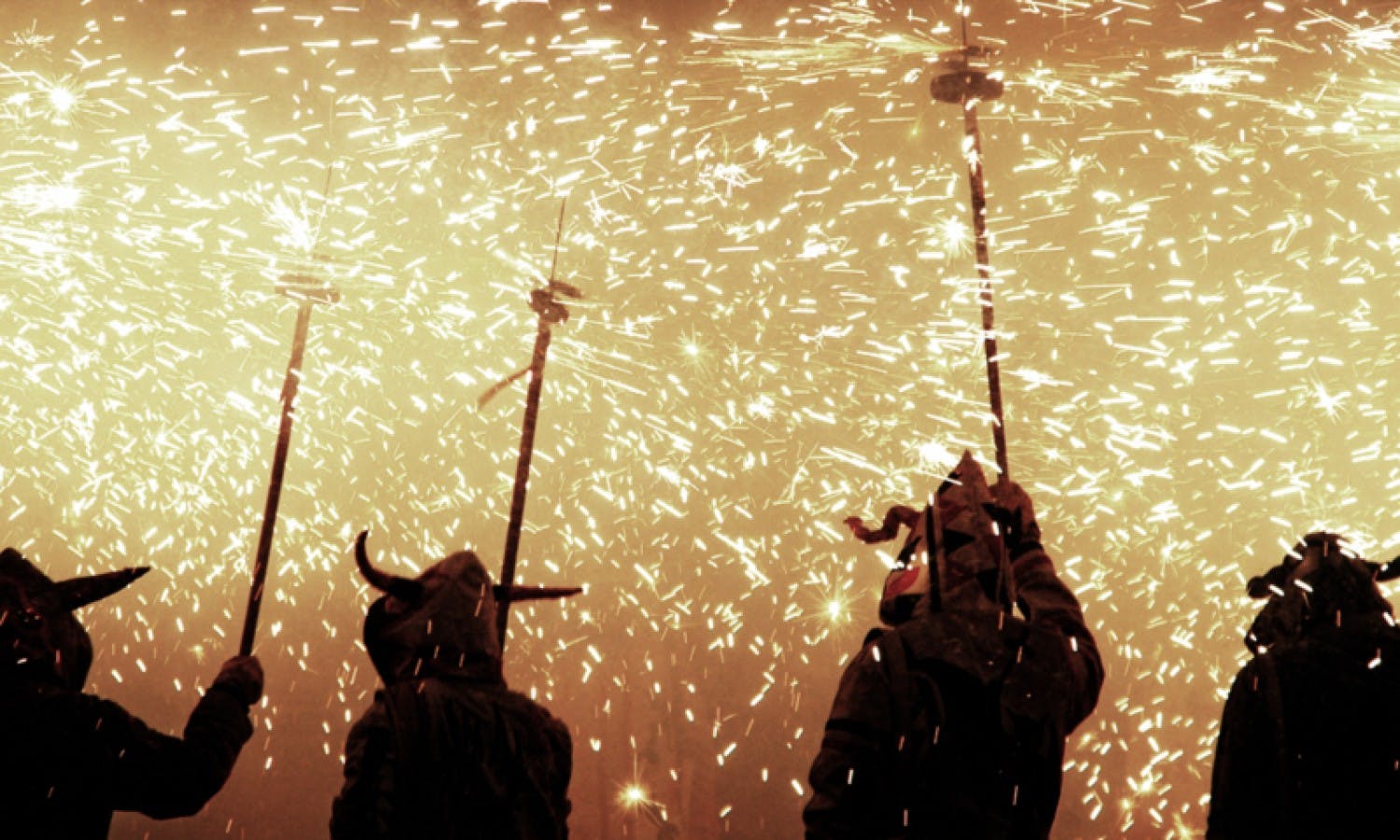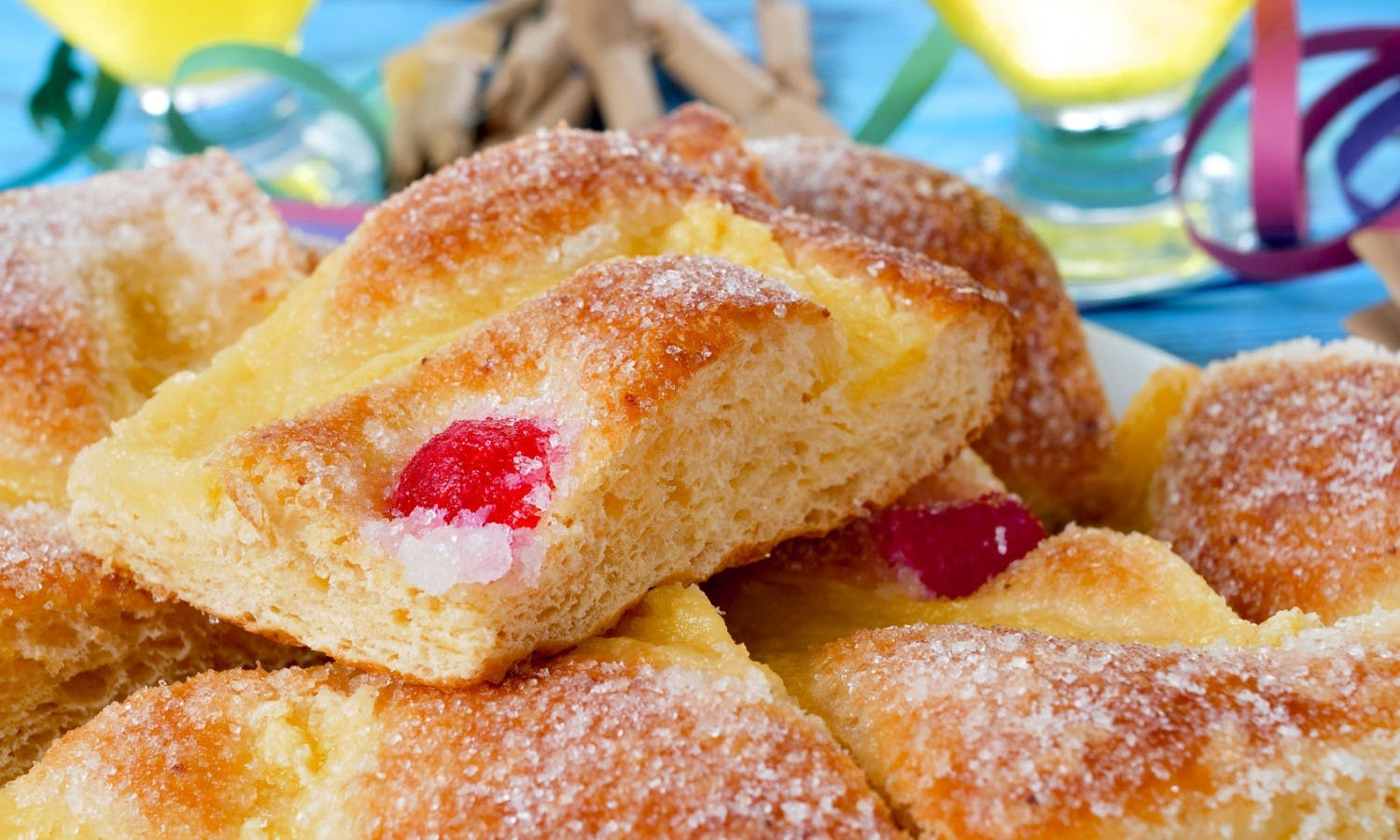From old superstitions to the modern festivities, Catalonia’s festival of Sant Joan has always meant one thing: fire. The region blazes to welcome the protection of summer, delighting locals and tourists alike.
Night of the creatures
Taking place on the night of the 23 June, the vigil of Sant Joan has been the traditional Catalan celebration of the Summer Solstice for centuries. Originally, it was believed to be the night when all the most fantastic creatures went out wandering among the people: fairies and elves . . . but also demons, witches and evil spirits. Bonfires were lit for protection, as fire was believed to be the only element capable of protecting people from these creatures.
Christianity adopted the festivity, making it coincide with the birthday of St John the Baptist and therefore converting a pagan tradition into a religious one. Meanings change, but the fire has continued burning until today.

Bonfires
La Flama del Canigó
One of the deepest traditions linked to the festival is La Flama del Canigó, an enduring symbol of Catalan culture. Every 22 June, the first bonfire is lit on the Canigó, a mountain located in the Pyrénées-Orientales, and from there the flame is carried through Catalonia by many volunteers. Barcelona welcomes the flame on the afternoon of 23 June, when it is sent to each neighbourhood to light all the city’s bonfires. And thus the night begins.
Being the shortest night of the year, nowadays it has become a night for gathering. Every region and every village has its own way of celebrating. If you feel like being part of it, go and find any of the correfocs taking place that night. You’ll find yourself in the middle of a fire parade, where a group of dragons and demons will shower you with sparks. Be careful, thoughl! No shorts allowed!

Correfocs – Jacob Garcia
Pastries and fireworks
If you feel like something more quiet, you’ll always find many popular dinners in the streets of every neighbourhood, where for sure you’ll be able to taste one of the most traditional pastries in Catalonia: the many varieties of la coca de Sant Joan: with marzipan, or cream and pine nuts, fruit or crackling.
After that, you’ll be able to enjoy the fireworks painting the skies with light and colour, and have some fun with the youngest of each family igniting firecrackers all night long.

Coques de crema
Sant Joan across Spain
Though fire has a special role in Catalonia, it is not the only place where this magic night is celebrated. Many regions in Spain have their own traditions, most of them involving this mystic element.
In Galicia, it is Terra Meiga or Land of Witches. Here, the tradition is to seek protection from evil spirits by following several superstitions, such as jumping over a bonfire no fewer than nine times or by having a purifying bath in the cold waters of the sea (jumping nine waves facing the beach will clean all your negative energy and increase female fertility).
Going to the other extreme of the country in Ciutadella, Menorca, the horse takes the leading role instead. During this festivity, caixers, or riders dressed in black and white, take to the streets with their horses, making them jump to the rhythm of traditional songs.
These are only some examples of what this magical night can offer the traveller in Spain. Experiencing the various forms of the festival of Sant Joan is a great way to meet its people, eat its food, learn its traditions and – why not – live some of its superstitions. Just let the fire guide you and discover the secrets of the night.
